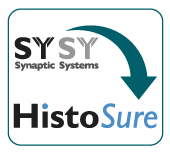|
|
|
|
| Cat. No. HS-397 017BT |
100 µg purified IgG, lyophilized, labeled with
Biotin.
Albumin and azide were added for stabilization. For reconstitution add 100 µl H2O to get a 1mg/ml solution in PBS. Then aliquot and store at -20°C to -80°C until use. Antibodies should be stored at +4°C when still lyophilized. Do not freeze! |
| Applications | |
| Label | biotin |
| Clone | 167B3 |
| Subtype | IgG2a (κ light chain) |
| Immunogen | Synthetic peptide corresponding to residues near the amino region of mouse F4/80 unprocessed precursor (UniProt Id: Q61549) |
| Reactivity |
Reacts with: mouse (Q61549). Other species not tested yet. |
| Data sheet | hs-397_017bt.pdf |
 Important information
Important information|
|